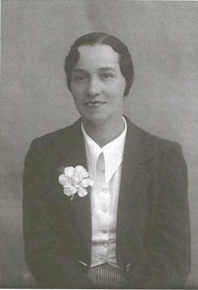Tiziana ‘Tosca’ Donati - singer
Versatile performer whose range spans musicals to sacred songs
The singer Tiziana Donati, who performs under the stage name Tosca, was born on this day in 1967 in Rome. Winner of the Sanremo Festival in 1996, Tosca has recorded 10 studio albums, released the same number of singles and has recorded duets with many other artists. She has enjoyed a successful stage career, appearing in numerous theatrical productions, and has been invited to perform songs for several movies, including the title track for Franco Zeffirelli’s version of Jane Eyre in 1996. She also sang and spoke the part of Anastasia in the Italian dubbed version of the Disney cartoon of the same name. At Christmas in 1999, she participated in concerts in churches in Italy where she performed Latin songs set to music by Vincenzo Zitello and Stefano Melone. Following this she began a collaboration with the Vatican, taking part in several televised events to commemorate the Jubilee of 2000, and was chosen to sing the Mater Iubilaei, the Marian anthem of the Jubilee, in a ceremony led by Pope John Paul II. Throughout 2000, she toured with Musica Caeli, a concert made up of never-before performed sacred chants. Read more…
_______________________________________
Libero Grassi - anti-Mafia hero
Businessman brutally murdered after refusing to pay
Libero Grassi, a Palermo clothing manufacturer, died on this day in 1991, shot three times in the head as he walked from his home to his car in Via Vittorio Alfieri, a street of apartment buildings not far from the historic centre, at 7.30am. It was a classic Mafia hit to which there were no witnesses, at least none prepared to come forward. Such killings were not uncommon in the Sicilian capital as rival clans fought for control of different neighbourhoods. Yet this one was different in that 67-year-old Grassi had no connection with the criminal underworld apart from his brave decision to stand up to their demands for protection money and refuse to pay. Grassi owned a factory making underwear, which he sold in his own shop. He employed 100 workers and his business had a healthy turnover. In a struggling economy, he was doing very well. Of course, the Mafia wanted their cut. Grassi began receiving demands, first by telephone, then in person, that he fall in line with other Palermo businesses and pay a pizzo, the term used for the monthly payment the mob collects from businesses in the city in a racket worth today in the region of €160 million a year. Read more…
____________________________________
Ugo Nespolo - artist and designer
Painter and sculptor worked in theatre, advertising and literature
The contemporary artist Ugo Nespolo, whose broad range of work includes paintings and sculpture, theatre sets and costumes, advertising posters, book layouts, commercial designs and experimental films, was born on this day in 1941 in the village of Mosso Santa Maria in the Biellese Prealps, about 70km (43 miles) northeast of Turin. As well as an enormous output of artworks influenced by Pop Art, conceptual art and Arte Povera among others and numerous sculptures in glass and ceramic, Nespolo created unique set and costume designs for a number of major opera and theatre productions and was associated with several prestigious advertising campaigns, including for the drinks manufacturer Campari and the chocolatier Caffarel. Nespolo is described as having an insatiable artistic and intellectual appetite and a belief that no artist should confine himself to a single medium. He is said to have inherited those characteristics from his father, whose restless nature compelled him frequently to change jobs and where he - and his family - lived. His interest in art was probably nurtured by his father’s brother, himself a painter. Read more…
____________________________________
Leonardo De Lorenzo – flautist
Flair for the flute led to international career
Leonardo De Lorenzo, a brilliant flute player who passed on his knowledge of the instrument to others through his books, was born on this day in 1875 in Viggiano in the province of Potenza. De Lorenzo started playing the flute at the age of eight and then moved to Naples to attend the music conservatory of San Pietro a Majella. He became an itinerant flautist until he was 16, when he moved to America, where he worked in a hotel. He returned to Italy in 1896 to do his military service in Alessandria and became a member of a military band directed by Giovanni Moranzoni, whose son was to become a famous conductor of the orchestra at the Metropolitan Opera in New York. De Lorenzo then began a career as a flautist and toured Italy, Germany, England and South Africa, joining an orchestra in Cape Town for a while. Eventually he returned to Naples to continue his studies. When he travelled to America again, he became the first flautist of the New York Philharmonic Orchestra directed by Gustav Mahler. He was warned never to answer back to Mahler, who had a reputation for being unpleasant. Read more…

.jpg)
.jpg)
.jpg)
.jpg)
%20(1).jpg)

.jpg)
_nave_left_-_Altar_of_Madona_di_Ca'Pesaro%20(2).jpg)

.jpg)


.jpg)

_-_Facade.jpg)
